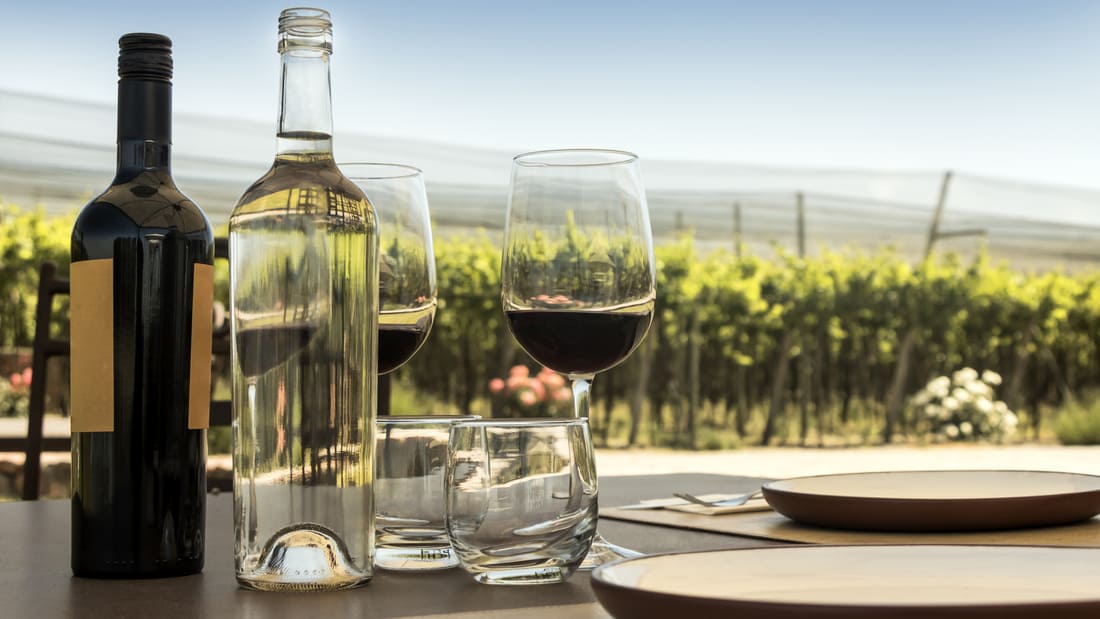
26 Jan All You Need To Know About Australian New World Wines
Wine connoisseurs often refer to wines as either “Old World” or “New World”. But what exactly does this mean, especially regarding Australian wines? While in the past wine, connoisseurs tended to favour Old World wines like French Bordeaux and Burgundy, today, many experts also appreciate and drink quality New World wines.
As winemaking has advanced in regions like Australia, California, and Chile, connoisseurs recognize the bold, fruit-forward styles that showcase a mix of Old World grapes like Cabernet along with varieties like Shiraz and Malbec. New World wines offer diversity and innovative techniques that complement the complexity and terroir of Old World bottles.
Understanding More about New World Wines
Here’s a breakdown of what defines New World wines and some key differences compared to Old World wines.
Where Are New World Wine Regions?
New World wine regions encompass everywhere except Europe. The term arose to classify wines from newer wine-producing countries outside of Europe. The leading New World regions include the United States (California, Oregon, Washington), Australia, New Zealand, South Africa, Chile, Argentina, and Canada.
In contrast, Old World wine regions refer to the traditional European wine countries like France, Italy, Spain, Germany, and Portugal. These places have significantly longer winemaking histories, often dating back thousands of years.
When Did Australian Wines Become “New World”?
Winemaking in Australia is considerably newer than in Europe. The Australian wine industry really took off in the 20th century. Although vines were first planted in Australia in the late 1700s, it wasn’t until the 1960s and especially the 1980s that Australian wines made it onto the international stage. This rapid expansion and adoption of new technologies is a crucial part of what makes them New World.
A Shift In Winemaking Approach
For much of history, Old World winemaking centred around terroir, the notion that the geography, climate, and soils imparted defining characteristics to the wine. Instead of showcasing a single grape variety, Old World wines aimed to express the signature of their specific place.
New World wines took a different approach, focusing on particular grape varieties and winemaking techniques. This allowed New World producers to make wines in an increasingly consistent style each year. Australian wines emphasize varietal characteristics and fruit-forward flavours achieved through careful vineyard management and winemaking.
Use Of Different Grapes
The grapes traditionally used in Old World wines included Syrah, Nebbiolo, Sangiovese, Tempranillo, Cabernet Sauvignon, Merlot, Chenin Blanc, and Riesling.
New World winemakers cultivated these classic French, Italian, and German varieties. But they also introduced distinctive grapes like Shiraz (Syrah), Chardonnay, Sauvignon Blanc, Pinot Noir, and Semillon. Australia adopted these grapes, now key varieties across Aussie wine regions.
New World Wine Styles
Australian wines showcase vibrant, upfront fruit flavours and approachable, smooth tannins. Red wines range from juicy, jammy Shiraz to elegant Pinot Noir. Crisp Sauvignon Blanc, buttery Chardonnay, and zippy Riesling represent Australian white wines. Compared to Old World wines, Australian styles tend to be fruit-driven, varietally expressive, and early drinking.
Use Of Technology In Wine Making
Where Old World wineries often use traditional production methods, New World producers eagerly adopt new technologies. Temperature-controlled stainless steel tanks, commercial yeasts, and modern presses allow precise winemaking. Australia invests heavily in such technology to create consistent, high-quality wines.
Focus On Branding & Marketing
Rather than emphasize place, New World wineries like those in Australia built brands around varietals and unique styling. Massive brands like Yellow Tail and Jacob’s Creek made Australian wines familiar to global consumers. Marketing connects the wines’ labelling and messaging directly to their fruit-forward taste.
Store Your New World Wines Correctly
As you can see, Australia epitomises New World wines with a booming modern wine industry focused on well-known varieties, fruit-driven styles, and marketing savvy. When you see an Australian wine label touting the grape and flavours upfront, you can be sure it will deliver a tasty, lush, smooth drinking experience.
Next time you open a bottle of Aussie Shiraz or Chardonnay, appreciate it as a quintessential “New World” wine. Ensure you store these and all your other wines in the right conditions.
For more information about how we can help with custom wine cellar planning and installation, please call the Signature Cellars team at 1300 570 636 to discuss your requirements with our experienced team.




No Comments